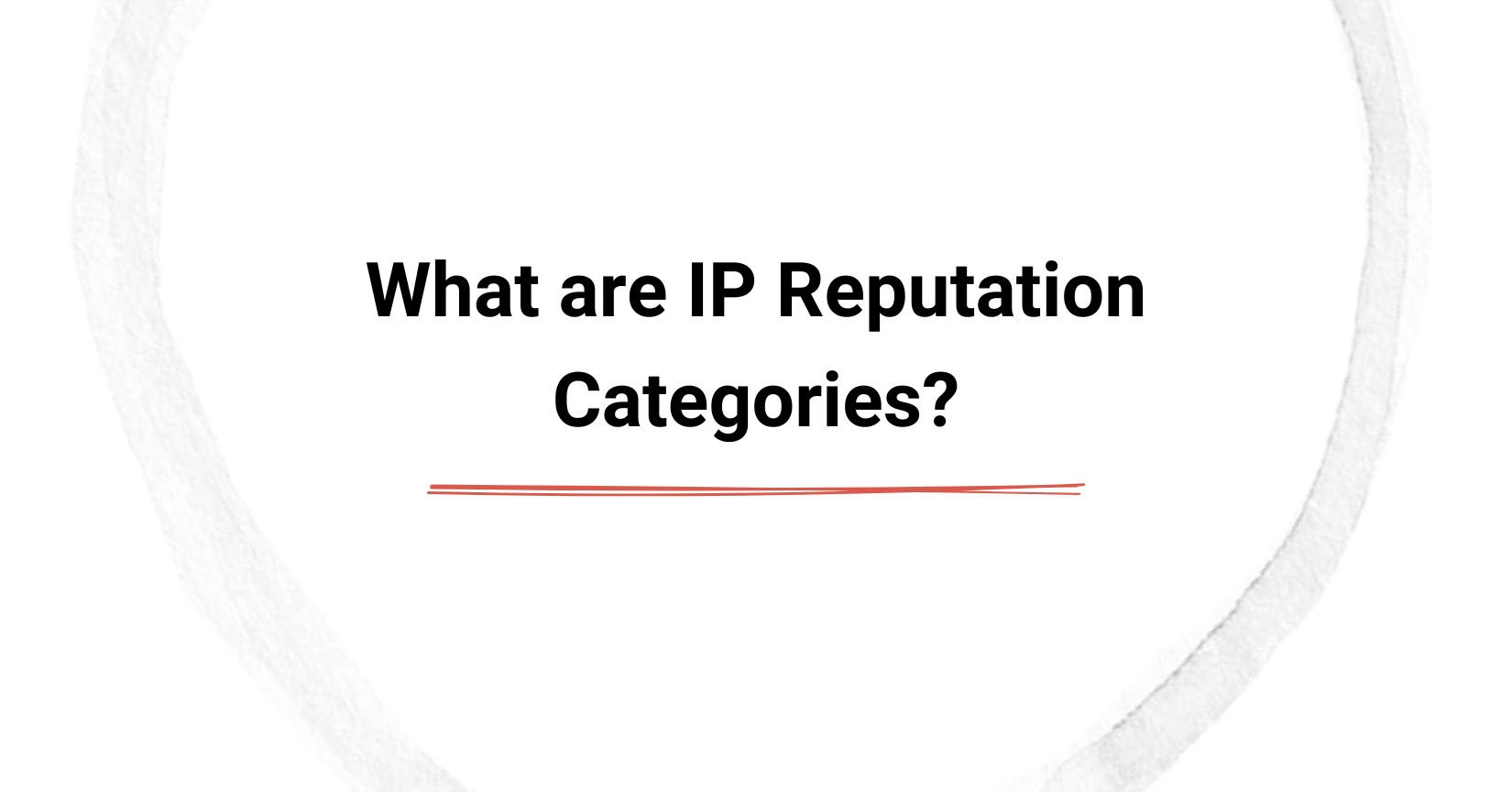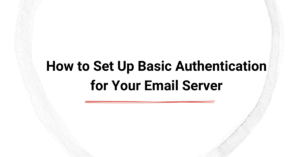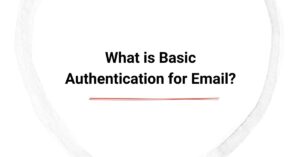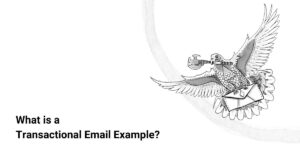In today's digital economy, email marketing remains one of the most effective business communication channels for engaging with your target audience. However, in order to get your message across, you must first reach the audience's inbox. With internet service providers (ISPs) and mailbox providers getting stricter by the day, avoiding spam filters is crucial to improve email deliverability.
A good IP reputation score is paramount for high email deliverability. Hence, you must take proactive measures to improve your IP reputation. In this blog, we explore the fundamentals of a good IP reputation score, analyze the key IP reputation categories, and discuss steps to improve your IP reputation. So, if you want to improve your IP reputation and reach customers in their inboxes, consult our email deliverability professionals today.
Summarizing the Key Points:
- IP reputation categories segregate IP addresses based on their trustworthiness and email-sending behavior.
- The top three IP reputation categories are good, neutral, and poor/bad.
- Factors like spam complaints, bounce rates, and sending volume can influence the IP reputation score.
- Knowing the IP reputation level can help identify potential email deliverability issues and address them before ISPs blacklist the sender's IP address.
What is IP Reputation?
IP (Internet Protocol) reputation measures the trustworthiness of an IP address based on its email-sending practices. It reflects how ISPs view the sender’s IP address data by analyzing the quality and behavior of the emails sent from that address. ISPs assess an IP’s reputation to filter emails, ensuring that legitimate messages reach recipients' inboxes and unwanted ones, like spam or harmful content, are blocked.
Understanding your IP reputation is vital because it directly impacts email deliverability. A good reputation improves inbox placement, increases engagement, and boosts the overall effectiveness of email marketing campaigns. Conversely, a bad IP reputation can significantly harm your email performance and brand credibility.
What are IP Reputation Categories?
IP reputation levels categorize IP addresses based on their email-sending behavior and trustworthiness. Sender Score is a widely used IP reputation tool that rates IP addresses between 0 and 100 based on how mailbox providers perceive them. A score above 80 is generally considered good. On that note, here are the three primary IP reputation categories.
Good IP Reputation
An IP with a good reputation score is considered trustworthy by email service providers (ESPs). These email senders are known to adhere to email best practices, such as using clean email lists, authenticating emails, and minimizing spam complaints. Trusted IP reputation services like Email Industries can help improve your IP reputation and boost email deliverability.
A strong IP reputation and domain credibility can help you achieve high inbox placement rates. Thus ensuring your emails land directly in the recipient’s primary inbox. Additionally, they tend to have low bounce rates because they send emails to verified, active addresses. Positive engagement, such as recipients opening and clicking on emails, is another hallmark of a good IP reputation.
Neutral IP Reputation
An IP with a neutral reputation sits in the middle ground. It is neither fully trusted by ISPs nor outright flagged as problematic. Neutral IP addresses often demonstrate inconsistent email-sending practices or lack a sufficient track record for email servers to categorize them as reliable. Emails sent from a neutral IP reputation might face mixed deliverability results.
Some emails may reach the inbox, while others sent from the same IP address might be filtered into spam folders. This inconsistency can make it challenging for email marketers to predict campaign outcomes. Neutral IPs also tend to have limited engagement metrics because their email-sending behavior doesn't consistently align with best practices.
Poor IP Reputation
ISPs view low IP reputation addresses as untrustworthy. These specific IP addresses are often associated with harmful behavior, such as sending spam, triggering spam traps, or causing delivery errors. As a result, they face significant deliverability challenges, including frequent blacklisting by ISPs and email filtering services.
Inbox providers are more likely to block emails sent from an address with a bad IP reputation. High spam complaints, excessive bounce rates, and low engagement metrics characterize poor IP reputations. These IPs are often linked with malicious behavior like sending marketing emails to purchased lists, contacting inactive subscribers, or distributing suspicious emails.
High-Risk IPs
High-risk IPs present the highest threat status. These IPs are flagged for severe issues and are often completely blocked by hosting providers. High-risk IPs are typically involved in email security breaches, such as phishing, spoofing, or sending bulk spam emails initiated by an attacker. They also show persistent non-compliance with email laws and regulations.
Emails sent from high-risk IPs rarely reach their intended recipients. ISPs frequently blacklist these IPs, and their emails are either rejected outright or filtered into spam folders. High-risk IPs pose a significant threat to email reputation and should be avoided at all costs. Businesses should invest in dedicated IP addresses instead of using a shared IP to enjoy greater control over their IP and domain reputation.
How are IP Reputation Categories Determined?
Several factors influence how email service providers determine an IP’s reputation category. Here are the primary considerations:
Spam Complaints and Feedback Loops
When recipients mark an email as spam, ISPs take note. This affects the IP reputation. Conversely, fewer spam complaints improve IP and domain reputation. Feedback loops, where ISPs notify senders about spam complaints, help businesses address these issues. To minimize spam reports, businesses can provide clear and easy opt-out options in their emails.
Bounce Rates and List Hygiene
When your emails fail to reach recipients, it's known as an email bounce. High bounce rates signal poor list management, which can harm an IP’s reputation. Therefore, it is crucial to maintain proper list hygiene by removing invalid addresses or inactive subscribers regularly. Email validation tools like Alfred by Email Industries can help improve list hygiene.
Engagement Metrics
Email engagement metrics, such as open rates, click-through rates, and unsubscribe rates, indicate the quality and relevance of an email marketing campaign. High engagement rates suggest that recipients interact with your emails, which boosts your IP’s reputation. On the other hand, low engagement rates can signal poor email reputation.
Sending Patterns and Volumes
Your email sending patterns and volumes can also impact your IP reputation. For example, email providers scrutinize inconsistent or excessive sending volumes. Therefore, you should gradually scale up email-sending volumes, a practice known as IP warming, and maintain a steady sending pattern to build trust with recipients and ISPs.
Authentication and Security
Email authentication protocols like SPF, DKIM, and DMARC play a critical role in determining IP reputation. These protocols verify the sender’s identity and ensure that emails are not forged or spoofed. Failing to implement these measures can significantly reduce an IP’s trustworthiness.
Why Do IP Reputation Levels Matter?
IP reputation categories are more than just technical classifications. They have real-world implications for businesses that rely on email marketing. Let's evaluate the top three areas of impact.
Inbox Placement
Higher IP reputation categories translate to better inbox placement rates. Emails sent from trusted IPs are more likely to reach the inbox, where they can engage recipients. This improves the effectiveness of email marketing campaigns and overall customer relationships.
Brand Reputation
A poor IP reputation, on the contrary, can damage a brand's image. If emails consistently land in spam folders or generate high spam complaint rates, it creates a negative perception. Customers may lose trust in the brand, which can hurt long-term credibility.
Campaign ROI
Emails that don’t make it to the inbox represent wasted resources and undermine the success of an effective email campaign. Furthermore, poor deliverability leads to lower engagement rates and reduced returns on email marketing investments.
How to Improve Your IP Reputation
Improving your IP reputation requires consistent effort. Here are five steps to improve your IP reputation:
Maintain List Hygiene
You can start by improving list hygiene. Remove invalid addresses and inactive subscribers from your contact lists to reduce bounce rates and ensure your emails reach active recipients.
Engage Your Target Audience
Sending relevant, personalized content helps boost email engagement rates. The more recipients interact positively with your emails, the more trustworthy your IP becomes.
Warm Up New IPs
For new IPs, warming up is essential. You can gradually increase sending volumes to build trust with ISPs. This prevents your IP address from being flagged for unusual sending behavior.
Monitor and Address Issues Regularly
Regularly monitoring IP reputation is crucial. Use free reputation lookup tools like Google Postmaster Tools or MXToolBox to track your IP’s reputation and promptly address any issues that might arise.
Authenticate Emails
Implementing SPF, DKIM, and DMARC email authentication protocols ensures your emails are verified and trustworthy. This builds confidence with ISPs and improves deliverability.
Move Up Your IP Reputation Score with Expert Guidance
IP reputation categories, ranging from good to high-risk, reflect the trustworthiness of an IP address. Understanding IP reputation categories helps businesses identify issues and improve the performance of their email marketing campaigns. By maintaining clean email lists, engaging your audience, and following email best practices, you can gradually improve your IP reputation and achieve higher email deliverability. Book a discovery call today to learn your IP reputation category and how you can achieve a good reputation.









